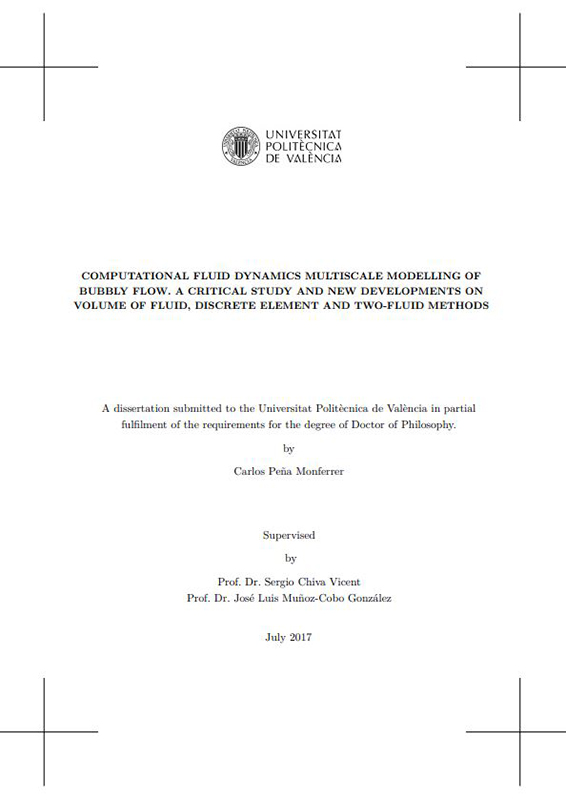Computational fluid dynamics multiscale modelling of bubbly flow. A critical study and new developments on volume of fluid, discrete element and two-fluid methods

The study and modelling of two-phase flow, even the simplest ones such as the bubbly flow, remains a challenge that requires exploring the physical phenomena from different spatial and temporal resolution levels. CFD (Computational Fluid Dynamics) is a widespread and promising tool for modelling, but nowadays, there is no single approach or method to predict the dynamics of these systems at the different resolution levels providing enough precision of the results. The inherent difficulties of the events occurring in this flow, mainly those related with the interface between phases, makes that low or intermediate resolution level approaches as system codes (RELAP, TRACE, ...) or 3D TFM (Two-Fluid Model) have significant issues to reproduce acceptable results, unless well-known scenarios and global values are considered. Instead, methods based on high resolution level such as Interfacial Tracking Method (ITM) or Volume Of Fluid (VOF) require a high computational effort that makes unfeasible its use in complex systems.
In this thesis, an open-source simulation framework has been designed and developed using the OpenFOAM library to analyze the cases from microescale to macroscale levels. The different approaches and the information that is required in each one of them have been studied for bubbly flow. In the first part, the dynamics of single bubbles at a high resolution level have been examined through VOF. This technique has allowed to obtain accurate results related to the bubble formation, terminal velocity, path, wake and instabilities produced by the wake. However, this approach has been impractical for real scenarios with more than dozens of bubbles. Alternatively, this thesis proposes a CFD Discrete Element Method (CFD-DEM) technique, where each bubble is represented discretely. A novel solver for bubbly flow has been developed in this thesis. This includes a large number of improvements necessary to reproduce the bubble-bubble and bubble-wall interactions, turbulence, velocity seen by the bubbles, momentum and mass exchange term over the cells or bubble expansion, among others. But also new implementations as an algorithm to seed the bubbles in the system have been incorporated. As a result, this new solver gives more accurate results as the provided up to date.
Following the decrease on resolution level, and therefore the required computational resources, a 3D TFM have been developed with a population balance equation solved with an implementation of the Quadrature Method Of Moments (QMOM). The solver is implemented with the same closure models as the CFD-DEM to analyze the effects involved with the lost of information due to the averaging of the instantaneous Navier-Stokes equation. The analysis of the results with CFD-DEM reveals the discrepancies found by considering averaged values and homogeneous flow in the models of the classical TFM formulation. Finally, for the lowest resolution level approach, the system code RELAP5/MOD3 is used for modelling the bubbly flow regime. The code has been modified to reproduce properly the two-phase flow characteristics in vertical pipes, comparing the performance of the calculation of the drag term based on drift-velocity and drag coefficient approaches.
